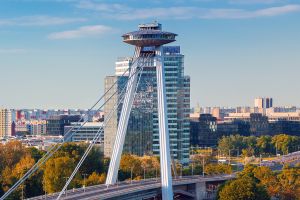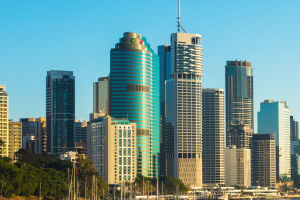John Hancock Tower
The John Hancock Tower in Boston, often called the Hancock Place, stands as a powerful symbol of modern architecture.
Completed in 1976, this 60-story skyscraper is the tallest building in New England and a striking element of the Boston skyline. But what truly makes this tower exceptional is its unique glass facade—a perfect blend of engineering ingenuity and artistic beauty.
Its reflective surface doesn't just capture the bustling city around it; it transforms how people perceive and interact with the urban environment.
The story of the John Hancock Tower is not just about a building—it's a tale of architectural resilience and transformation.
The Vision Behind the Tower
Designed by the renowned architect Henry N. Cobb of the firm Im.M. Pei & Partners, the John Hancock Tower was envisioned as a sleek, minimalist structure that would complement the historic architecture nearby. Cobb sought to create a building that was elegant and understated, allowing it to blend seamlessly into Boston's diverse architectural landscape. This vision led to the innovative use of an all-glass facade—a concept that was revolutionary at the time.
The glass panels were intended to reflect the ever-changing sky, weather, and city lights, creating a dynamic visual experience that would constantly shift throughout the day and night. The tower's minimalist style, with no decorative elements or complex shapes, emphasized the beauty of simplicity and modernism.
John Hancock Center Chicago - 875 North Michigan Avenue - 4k Stock Drone Video Footage
Video by Chicago Real Estate Video
Early Challenges and Controversy
However, the road to realizing Cobb's vision wasn't without bumps. Shortly after its completion, the John Hancock Tower faced significant issues with its glass facade. Strong winds caused some of the large glass panels—each weighing nearly 500 pounds—to detach and fall, posing a serious danger to pedestrians below. The problem was so severe that plywood sheets temporarily replaced the glass panels, leading locals to jokingly refer to it as the "Plywood Palace."
This embarrassing and costly issue triggered a full-scale investigation into the building's design and construction. Engineers discovered that thermal expansion and contraction, combined with pressure differences, caused the glass to crack and pop out of its frame. The solution involved redesigning the window system and replacing every single glass panel with a new, specially designed version that could withstand Boston's challenging weather conditions.
The Reflection Effect: Creating a New Experience
The John Hancock Tower's glass facade does more than just cover the building—it creates an interactive relationship between the tower and its surroundings. Each panel is slightly tilted, allowing the building to reflect different aspects of the cityscape.
This "mirror effect" means that from various angles, you might see the reflection of the adjacent historic buildings, the Boston Public Library, or the sky above. As daylight shifts, so does the building's appearance, creating a constantly changing visual spectacle.
The reflective glass also serves a functional purpose. It helps reduce the building's overall heat gain, making it more energy-efficient. The transparency and lightness of the facade help the skyscraper appear less imposing, even at its considerable height. Instead of overwhelming the historic buildings nearby, the John Hancock Tower feels like a modern complement—an urban chameleon that adapts to its surroundings.
The Tower Today: An Iconic Landmark
Today, the John Hancock Tower stands as a testament to the power of architectural innovation and resilience. The building's successful adaptation of its facade transformed it from a troubled project into an architectural icon. Its minimalist beauty and constantly shifting reflections have earned it a place as one of Boston's most beloved structures.
For those visiting Boston, the John Hancock Tower is more than just a skyscraper—it's a piece of living art. On a sunny day, its glass exterior reflects a deep blue sky, while at sunset, it turns into a canvas of warm, golden hues. At night, the tower's sleek silhouette stands quietly against the dark sky, blending into the city's vibrant lights.
A Lasting Legacy
The story of the John Hancock Tower is not only about overcoming technical challenges but also about pushing the boundaries of design and creating a new form of urban expression. Its glass facade symbolizes modern architecture's ability to merge aesthetics with functionality, shaping how people experience the built environment.
The tower's journey—from its initial struggles to its current status as a beloved landmark—is a reflection of Boston itself: resilient, innovative, and always evolving. As it continues to captivate locals and tourists alike, the John Hancock Tower proves that sometimes, the greatest beauty comes from overcoming adversity.


